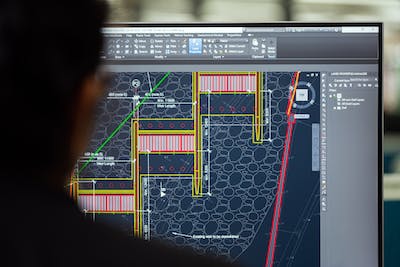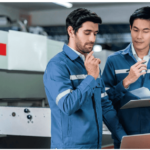Photogrammetry is the art and science of taking measurements (photograms) from photographs. Since the Second World War, when photography began to play an important role in remote sensing, photogrammetry has existed in some form.
In addition, it is another technique for recording the geometry of a part and creating a 3D model. This technology collects data using photographs rather than light, unlike 3D scanning. To create a 3D model, this technology needs not only a camera of your choice but also a computer and specialized software.
A QUICK VIEW OF PHOTOGRAMMETRY SOFTWARE
With photogrammetry software, numerous photographs of the object you want to model are taken to create a 3D model. Similar to the scans taken using structured light 3D scanning, these photographs are taken from various angles to capture each part of the geometry. They must slightly overlap from one photo to the next. The photogrammetry software can later align the photos because of this overlap.
By and large, 100 photographs are expected to get adequate information for a decent model. If you only have one camera, this can take a long time because you have to rotate the part or move the camera around it to take one photo at a time. If you have a setup with multiple cameras, this is easier.
After each photo has been taken, it is imported into the software to align. Using image processing, the software locates reference points in the texture of the overlapping photos. From this arrangement of all of the photographs, the product can then plot information directs utilizing triangulation to compute the distance and area of each element in a three-layered space. The software can use this to create a polygon mesh similar to 3D scanning by creating a point cloud.

ADVANTAGES AND DISADVANTAGES OF USING PHOTOGRAMMETRY FOR 3D MODELS
PROS
- Photogrammetry’s excellent capacity to reproduce an object in its full color and texture is the primary benefit of using it for 3D models. With 360 video photogrammetry, you can reproduce a top-notch quality of an object in no time. While this is something that some 3D scanners can do, photogrammetry is better suited for this because its photographs are more realistic.
- Additionally, photogrammetry software and equipment are not nearly as expensive as 3D scanning, making it accessible to most people. For the most part, you can use any digital camera for photogrammetry, so you have more options for what to use.
- Unlike 3D scanning, the technology does not incur high upgrade costs. Typically, all that is required to upgrade photogrammetry is new software.
CONS
Photogrammetry has many disadvantages in addition to these advantages.
- Working with parts with a smooth, flat, or solid-colored surface can be challenging because a part’s texture makes it possible for photogrammetry to create reference points. To fix this, some industry experts suggest modifying the object’s surface, such as adding a powder to the part. Sadly, this can be dangerous for various reasons, including the desire to preserve the component’s original condition and the resultant skewed measurements.
- If you don’t have a multi-camera setup, photogrammetry can also be a disadvantage. Because you have to manually rotate the component or move the camera around, working with just one camera can take a long time.
- In addition to this manual movement, you must ensure that no parts of the part are missed. Because photogrammetry doesn’t build the model in real-time as 3D scanning does, you must take all the photos and import them before you can tell if you missed a section or need to redo an area. This can bring about time lost since you need to get back to the article site or set up the part again to take more photographs.














